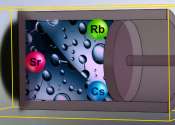New material for hydrogen storage confines this clean yet troublesome fuel
Skoltech scientists and their colleagues from Shubnikov Institute of Crystallography of RAS and research centers in China, Japan, and Italy have discovered a material for chemical storage of hydrogen that can "soak up" four ...
Apr 17, 2024
1
48









